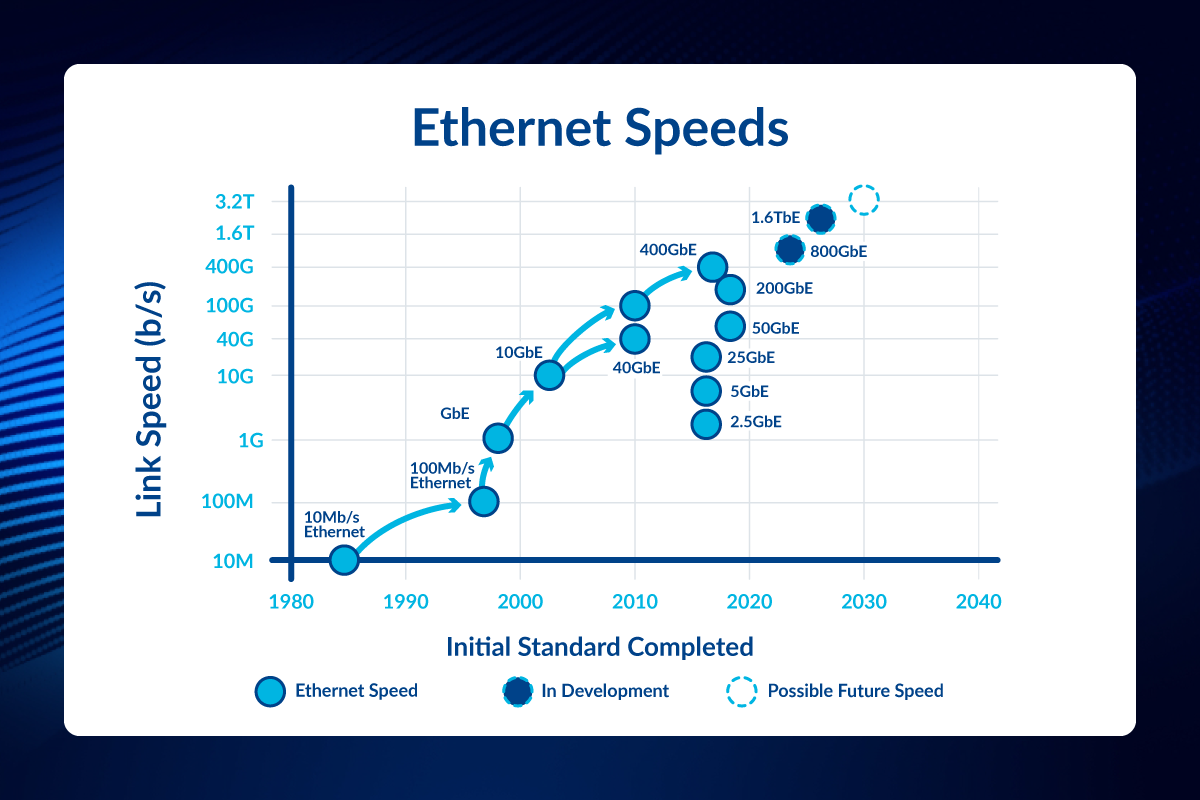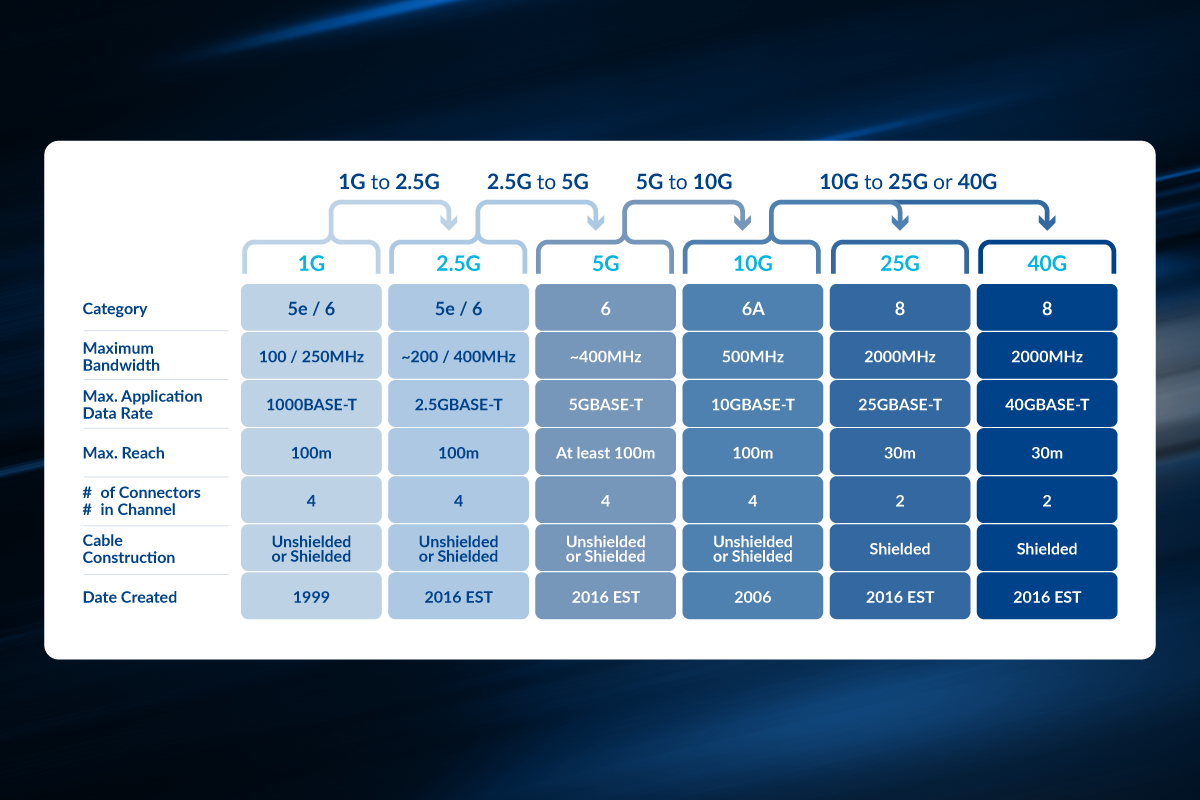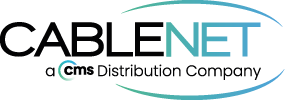Enterprise Local Area Networks (LANs)
Enterprise LANs use wired and wireless networks connecting hundreds or thousands of devices over Local Area Networks (LANs). Most LANs use Ethernet BASE-T copper connectivity supported with a multi-mode and single-mode fibre backbone cable topology.
Enterprise LANs are a massive market, with Ethernet as the dominant technology, shipping over a billion new port connections per year. Most of these ports use a Copper BASE-T connection at the access layer, with multi-mode and single-mode fibre links (MMF/SMF) further into the network and backbone.
The massive increase in bandwidth demand, including Wi-Fi access points and Enterprise class client devices, drives technology transitions forward. BASE-T ports are transitioning from 1000BASE-T to 2.5G/5G/10G BASE-T, and optical ports are moving from 10G/40G to 25/100G.

BASE-T: The Trusted Solution
Structured cabling BASE-T copper solutions are a cornerstone of the LAN infrastructure. 1000BASE-T and 10GBASE-T are the highest-volume port shipping. This technology is dependable, field proven, and growing in the access layer. Twisted-pair cabling with RJ-45 connectivity is recognised and adopted as the de facto infrastructure choice throughout commercial networks worldwide. With auto-negotiation, backwards compatibility, and staggered active speed upgrades, BASE-T solutions allow for mixed server speeds in each rack or cabinet supporting any combination of 1G, 2.5G, 5G, 10G, 25G, or 40G servers; This gives network managers more flexibility throughout deployment and operation in terms of timing, disruption, and cost for upgrading their networks.
Indeed, there is no one-size-fits-all solution for cabling infrastructure for the LAN market centre. It breaks down to what best fits the layout, scope, bandwidth needs, scalability, manageability, and budget, but demand for faster gigabit performance in a smaller footprint will continue to grow. With BASE-T providing the most cost-effective access layer networking option, copper-structured cabling solutions will continue to be fundamental cabling used in LANs.
Moving Beyond 10GbE
The move to speeds beyond 10G is no longer a distant vision. While 10G has recently replaced 1G as the dominant server port speed, the demand for increased server speeds continues, especially within cloud data centres.
As with previous industry migrations, we are now seeing the move from 1G and 10G copper systems will remain a crucial part of the transition to 25G and 40G. Network and cabling standards bodies have released new BASE-T data rates that support emerging enterprise and data centre applications. In addition to 25G BASE-T and 40G BASE-T standards, IEEE has developed standards for 2.5G BASE-T and 5G BASE-T over Category 5e and Category 6. Category 6A remains the recommended cabling for all new installations.
International standards have upgraded the physical layer (PHY) network rates, further extending copper's reach and application capability. These new standards enhance the life and flexibility of copper structured cabling networks, providing a more cost-effective option for future network migrations with 40G BASE-T and 25G BASE-T using Category 8 connectivity, using the standard 8P8C/RJ-45 interface. This interface allows the cabling system to be backwards compatible with existing Category cabling.

As well as growing interest in these 25G and 40G speeds, the transition to higher speeds for many LANS and data centres will see a global shift to 10G as the minimum standard and 40G and 100G server connection speeds in the coming years.
